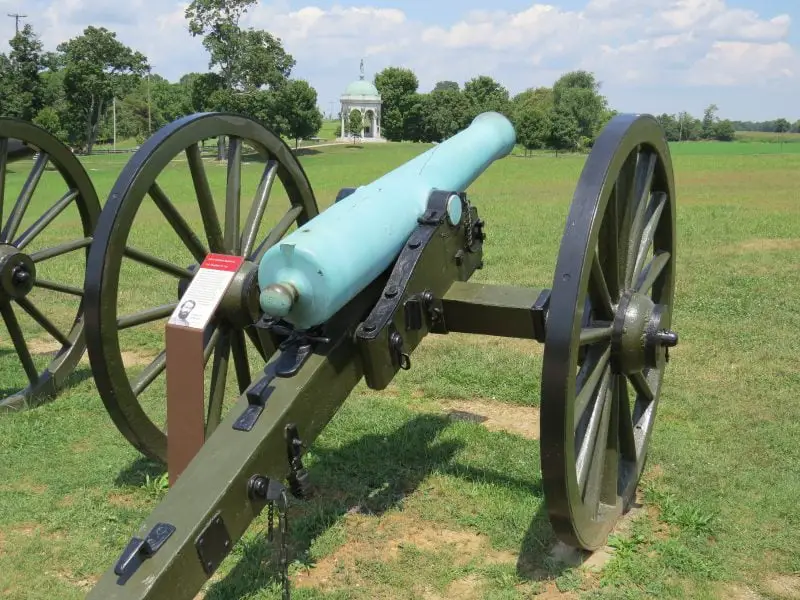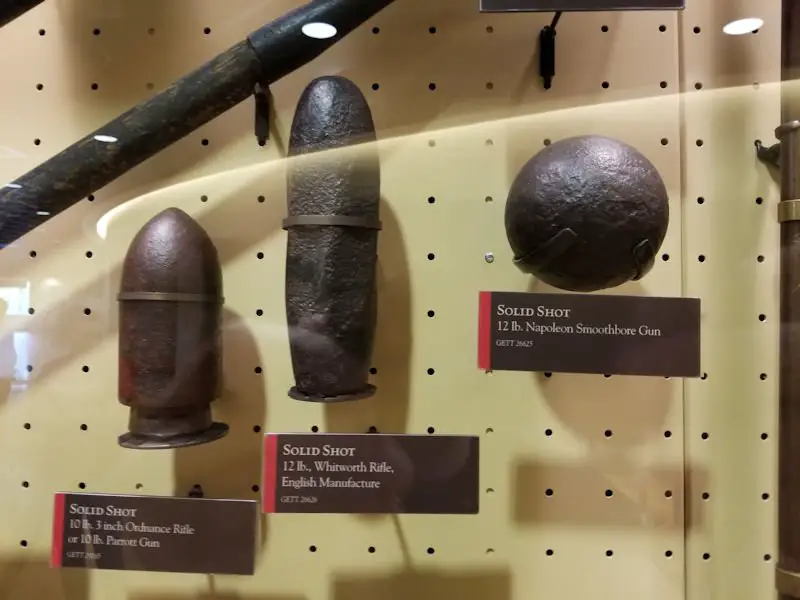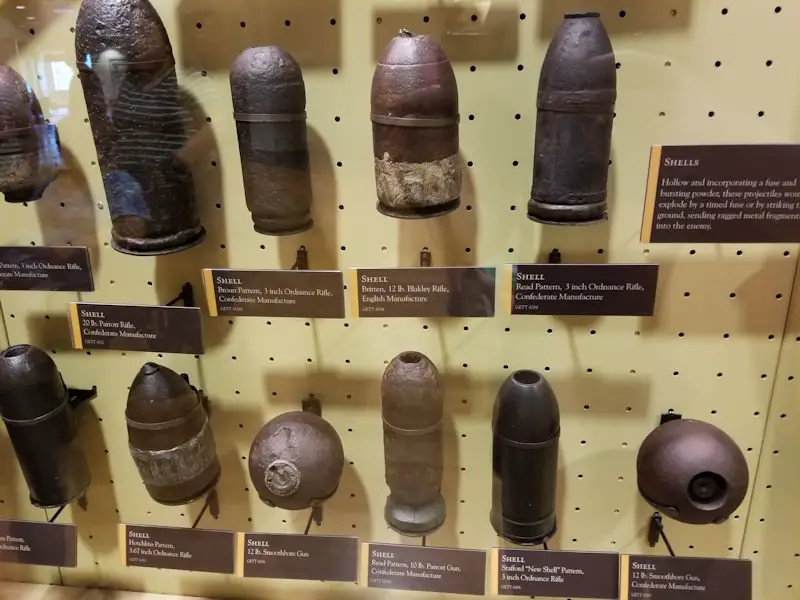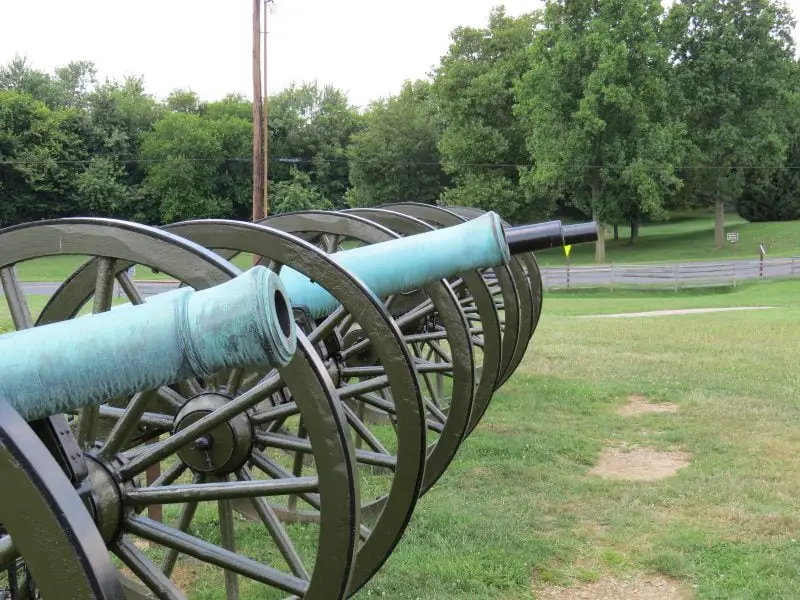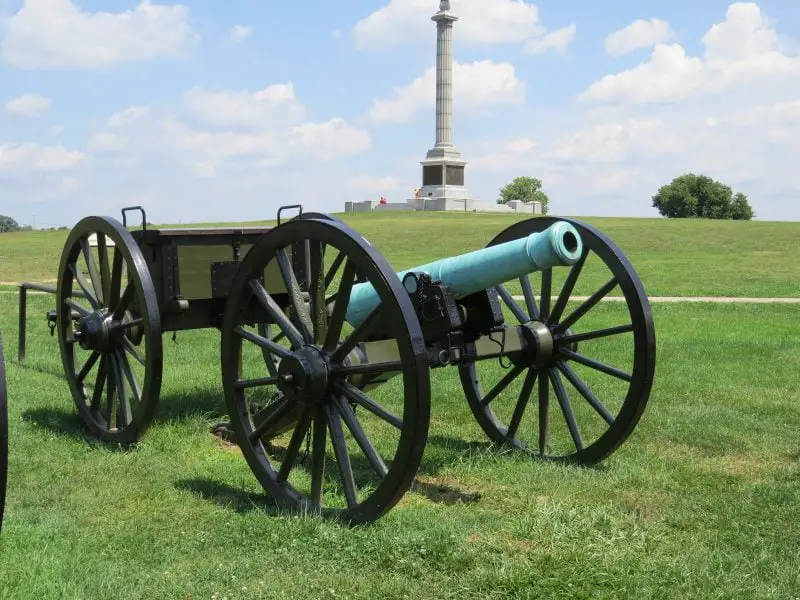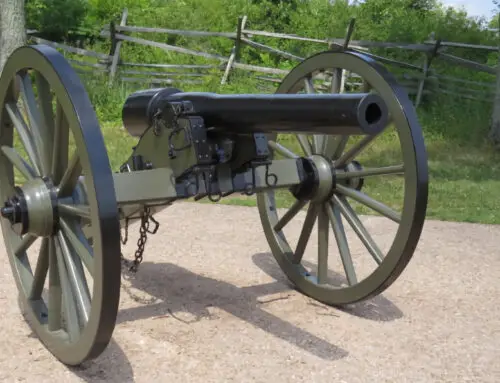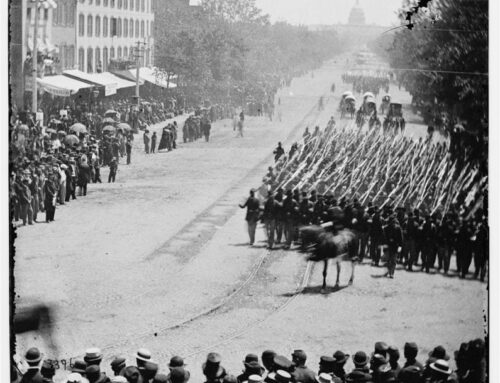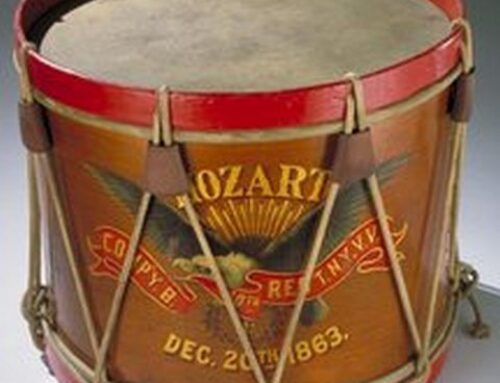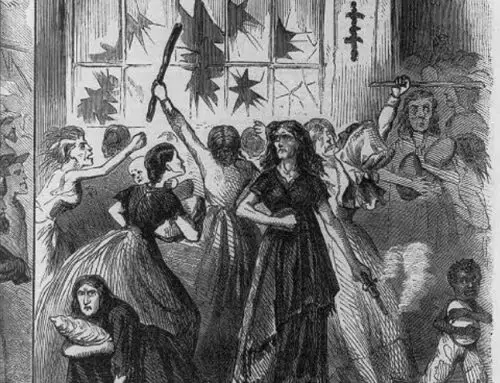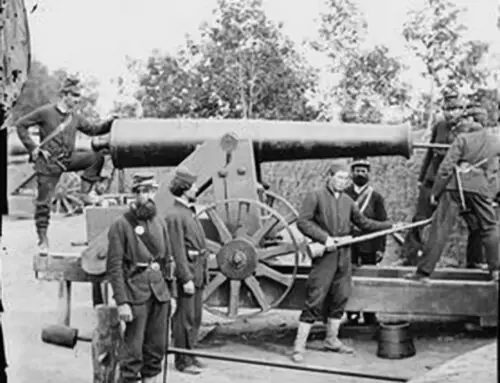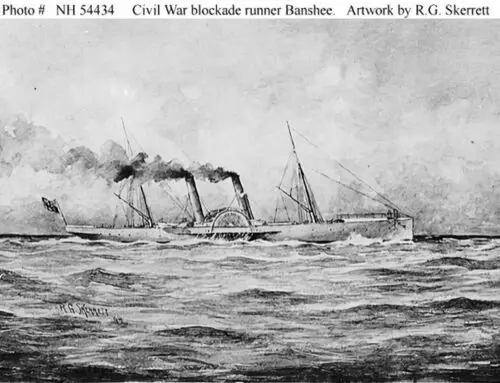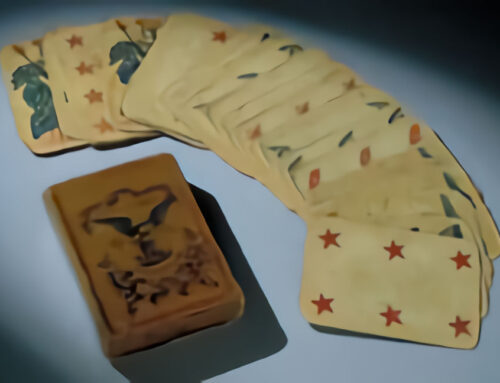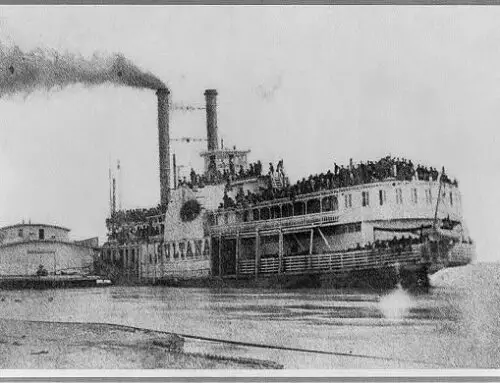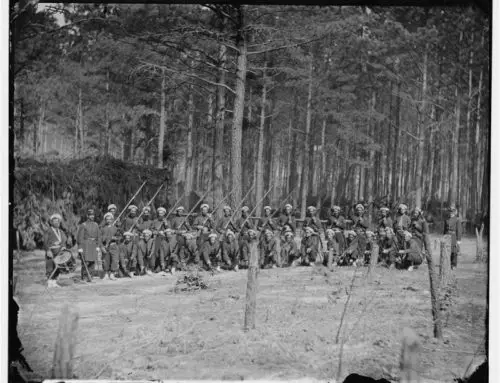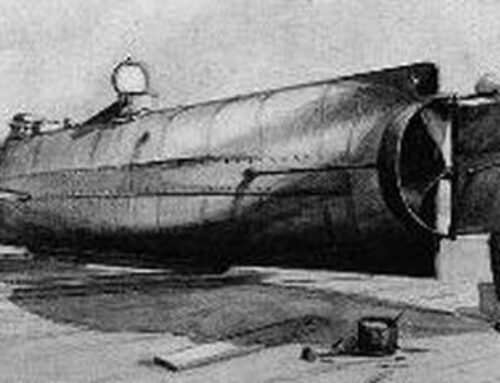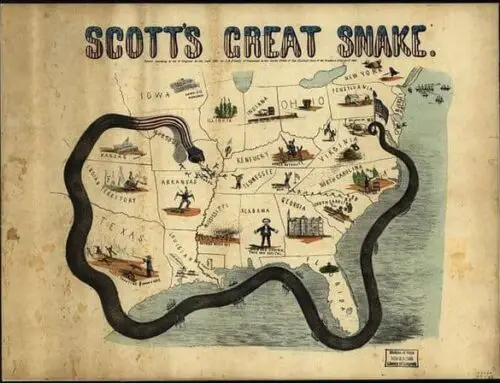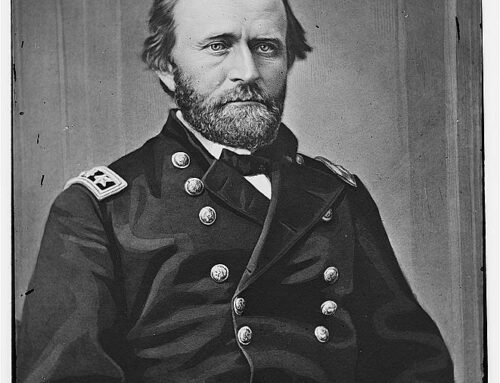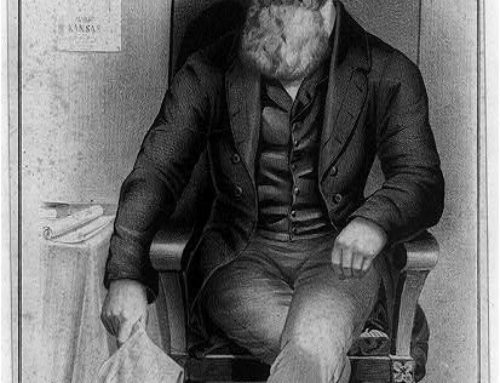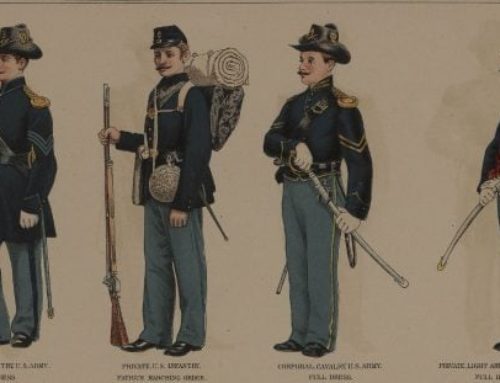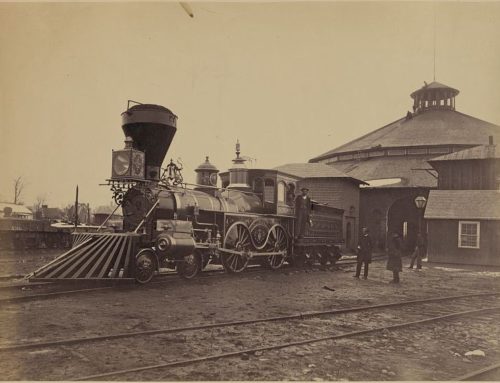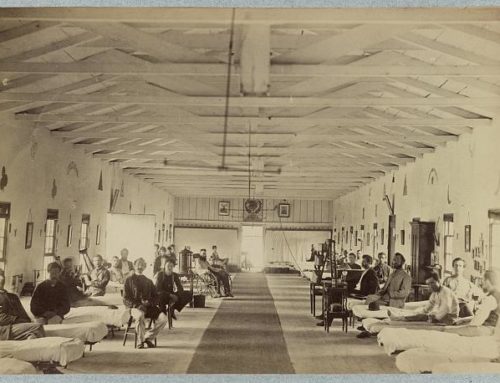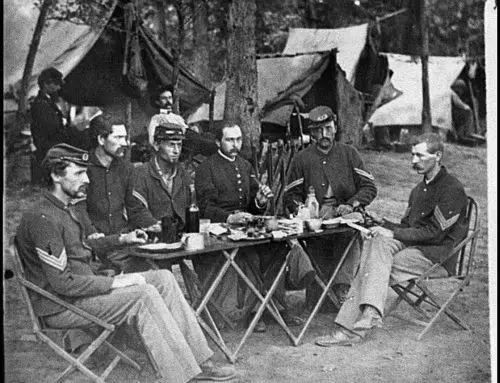Civil War artillery played a very important part during the American Civil War. It was used against infantry, buildings, fortifications, and ships. Artillery was limited during the Civil War to firing at targets the gunners could actually see.
There were no forward observers who could direct fire onto a target. Artillery fought side by side with the infantry on the battlefield.
Most artillery during the Civil War were muzzle loading guns, breech loading was a new technology and was not used much during the war. One example of a breech loader was the Whitworth cannon.
Civil War Artillery Types
Civil War artillery barrels came in two varieties. They were either smoothbore or rifled. Smoothbore artillery such as the Napoleon were made of bronze and shot round iron cannonballs.
Rifled artillery pieces such as the 10-pounder Parrott rifle and the 3-inch Ordnance rifle were made of cast iron and wrought iron and used conical shaped shells.
Field artillery during the Civil War were referred to as 10 pounders, 12 pounders or inches such as the 3 inch ordnance rifle etc…
Pounders simply referred to the weight of the projectile that the gun would fire. A 12 pounder Napoleon cannon shoots a 12 pound cannonball. Inches are simply the diameter of the bore. A 3 inch ordnance rifle has a barrel 3 inches in diameter.
Civil War Artillery Organization
A Civil War battery in the Union army typically had 6 guns of the same size and type. When moving an artillery piece each gun was attached to a limber. The limber contained a limber chest which held ammunition. The gun and limber were pulled by a team of 6 horses.
Each gun also had a caisson which held additional ammunition and supplies, the caisson was also pulled by a team of 6 horses. Extra horses were needed to pull forges, haul supplies, or for officers to ride on. A typical Union battery would require around 18 horses per gun.
The Confederate army was not able to maintain this uniformity. Throughout the war the Confederate military was always short on cannons and horses. They usually had 4 to 6 horses per gun and 4 guns in a battery.
The guns in a Confederate artillery battery were not the same types and size. The Confederates gathered whatever guns they had available and threw them into a battery. They did not have the luxury of having uniform artillery batteries like the Union artillery had.
Civil War Artillery Projectiles
There are four types of Civil War cannon projectiles that were used during the war.
- Solid Round Shot – This is a solid iron ball attached with metal bands to a wooden sabot. The powder bag is attached to the wooden sabot.
- Explosive Shell – This is a hollow iron ball filled with black powder. This projectile uses a fuse that can be cut at a certain length so that the iron ball explodes when it arrives at the target.
- Case Shot – Like explosive shell it is filled with gunpowder and uses a fuse. The difference is it has a hollow area that contains small iron balls, the shell explodes when it arrives at the target.
- Canister Shot – This is a canister filled with small iron balls that when used at close range acts as a giant shotgun. Canister shot is used against infantry and cavalry at close range. It is generally only used as a last ditch effort when the gun is about to be attacked. Cannons can be loaded with double canister which multiples the shotgun effect against the target.
Civil War Artillery Gun Crews
It took eight highly trained artillerymen to crew one artillery piece. Each crew member was cross-trained so they could do each job that was required with the loading and firing of the weapon. If one member of the gun crew was wounded or killed, any member of the crew could step in and take their place.
Civil War cannons were very expensive, they were meticulously maintained and artillerymen had very strict discipline and rules to keep them operating, and in proper working condition.
Gun crews had a very important job so they were the most well trained soldiers in both the Union and Confederate armies.
Each member of the crew was assigned a number. The gunner was in overall command of his artillery piece.
The gun crew consisted of:
- Gunner
- Number 1
- Number 2
- Number 3
- Number 4
- Number 5
- Number 6
- Number 7
Each crew member had a specific task to complete in the reloading process. After a shot was fired the crew used the following procedure to reload the cannon.
- Number 3 – Uses a piece of leather over the thumb called a thumb stall. Places thumb over the vent opening on the back of the barrel. This prevents air from getting inside the barrel which could create a spark.
- Number 1 – Uses a rammer with a sponge dipped in water to clean the bore of the gun and extinguish any remaining sparks. This prevents the gun from exploding when it is loaded for the next shot.
- Number 7 – Opens limber chest while number 6 prepares shell
- Number 6 – Removes shell from limber chest when gunner calls for it. If they are using an explosive shell he cuts fuse to the proper length.
- Number 5 – Receives shell from number 6 and takes it to the muzzle of the gun.
- Number 2 – Receives shell from number 5 and loads the projectile into the gun.
- Number 1 – Uses the other end of the rammer which has a wooden block on the end to push the projectile down the barrel of the gun.
- Number 3 – Removes thumb from vent hole. Pushes a vent prick into the powder bag inside the barrel.
- Number 4 – Places friction primer in vent hole which is attached to the lanyard. When the friction primer is pulled it causes a spark which ignites the gunpowder in the cannon. Pulls lanyard tight and waits for command to fire.
- Gunner – While these steps are taking place he is aiming the gun. Elevation changes are made using a handscrew located at the rear of the barrel. Side to side changes are made by moving the trail of the gun carriage either left or right.
- Number 3 – Helps gunner aim the gun by moving the trail from side to side.
- Gunner – After aiming is complete everyone moves out of the way to avoid the guns recoil. The gunner gives the order to fire the cannon.
- Number 4 – Pulls the lanyard and fires the cannon.
After the shot is fired the recoil would push the gun back 8 feet or more. It would have to be rolled back to it’s original firing position after each shot and the whole process would start again.
Civil War Artillery at Gettysburg
Civil War artillery was extremely important, it even turned the tide of many battles during the course of the war. The artillery bombardment on the third day of the Battle of Gettysburg is one of the best examples of this.
The artillery bombardment preceding Pickett’s Charge was so loud it could be heard sixty miles away in Baltimore. The people of Baltimore could hear a low rumbling sound coming from the west that lasted well over an hour. Imagine the sound of distant thunder from an approaching storm.
As the Confederates attacked they were riddled by Union artillery which was not destroyed during the Confederate bombardment.
Union guns raked southern ranks killing and wounded hundreds of men. When the remaining rebels finally reached the Emmitsburg road they came under rifle fire from the defending Union troops.
Only a couple of hundred Confederates were able to actually make it to the Union line but they were quickly driven back with heavy casualties. Union artillery effectively stopped Pickett’s Charge by greatly reducing their ability to break through the Union line.
Artillery played a pivotal role during the conflict. Destroying or capturing the enemy’s artillery became an important goal for both sides during the Civil War.

